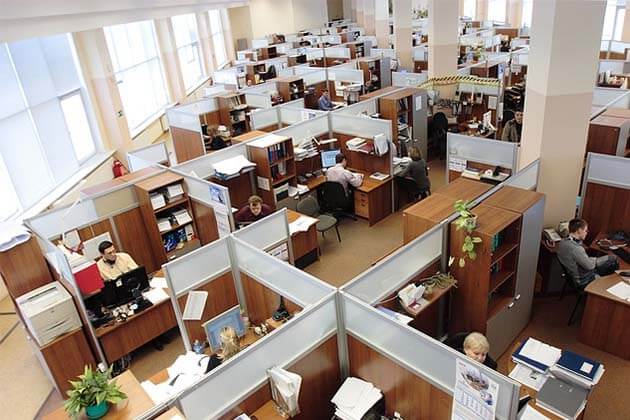Protecting your office privacy is an important part of business operations. From confidential data to private conversations, there are many reasons to ensure that information remains secure and confidential. One way to accomplish this is with the use of a privacy screen in the office. Privacy screens can help maintain confidentiality and allow workers to concentrate without distraction from others in their work area.
Contents
In this article, we will offer 13 easy ways to increase privacy in your office with a privacy screen.
1. Place a privacy screen between employees:
When desks are set up side by side, consider placing a desk divider or panel between them for more security and concentration while working. This allows both employees to still remain close enough to collaborate but far away enough so they cannot distract each other from their work tasks.
2. Install permanent privacy screens:
For a more permanent solution, install office partition walls around an area for added privacy and concentration. This can also be used to create individual offices or private workspaces for employees.
3. Use adjustable panels for versatility:
Adjustable panels are great for creating temporary walls that can be easily removed and moved around when needed. This allows you to adjust the amount of privacy in a space instantaneously without any extra hardware or installation costs.
4. Utilise window films:
Window films are a cost-effective way to add much-needed privacy to your windows while still allowing natural light into the space. They come in many designs and can even help to reduce glare on computer screens.
5. Hang curtains or blinds:
Curtains and blinds can add a level of sophistication to any office and provide excellent privacy as well. They come in a variety of fabrics, colours and materials so you can easily find ones that fit the overall aesthetic of your space.
6. Install sliding doors:
Sliding doors are great for creating more private areas within an open office layout. This helps to separate spaces while still allowing natural light to flow through the area, reducing energy costs and providing an unobstructed view when needed.
7. Place plants strategically:
Using plants as a way to increase privacy is becoming increasingly popular in offices today. Not only do they bring colour and life to the space, but they can be strategically placed to create more closed off areas within an open plan office.
8. Utilize floor-to-ceiling screens:
Floor-to-ceiling screens are great for creating complete privacy in any workspace. They come in many designs and materials so you can easily find ones that will complement your overall office design.
9. Choose soundproof walls:
Soundproof walls are essential for offices where a lot of sensitive information is shared or discussed. These walls help to muffle noise and keep conversations private while still allowing natural light into the space.
10. Hang acoustic panels:
Acoustic panels not only add a decorative element to the room, but they also help to absorb sound, providing better acoustics and improved privacy.
11. Install white noise machines:
White noise machines are a great way to further muffle sound in the office. They provide a low-level background noise that can help mask conversations and make it more difficult for people to hear what’s being said from other parts of the office.
12. Place lamps strategically:
Lamps can be used to improve the lighting in an area and also provide a level of privacy from outside eyes. Strategically placing lamps can help create more secluded areas within an open floor plan that are still well lit.
13. Utilize office cubicles:
Office cubicles are great for creating more private workspaces, as they offer walls and dividers between desks that give employees their own personal space while still allowing them to collaborate with co-workers nearby.
Conclusion:
By implementing one or more of these tips into your office design, you can ensure that your employees have the necessary privacy they need to stay focused on their work tasks while ensuring that all infrastructural needs are met.
With the proper office design, you can create an environment that encourages productivity and collaboration while still ensuring privacy for employees.




